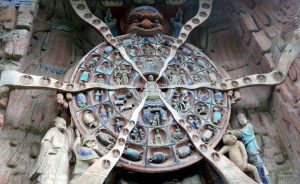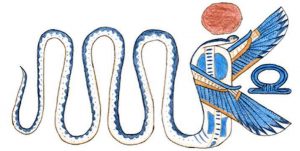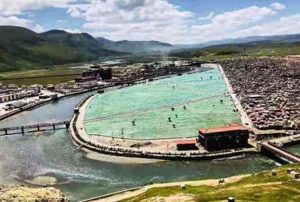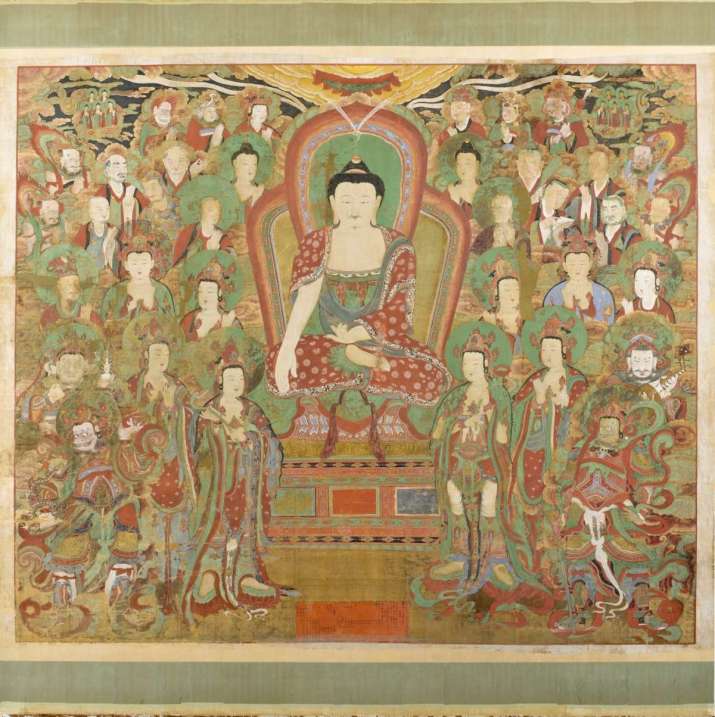
Four Buddhist paintings dated to Korea’s Joseon dynasty were returned to South Korea earlier this month after an absence of almost 70 years, following an agreement between the Jogye Order of Korean Buddhism, South Korea’s largest Buddhist order, and the Los Angeles County Museum of Art (LACMA).
The four paintings were reportedly looted from a Buddhist temple by US military personnel between June and October 1954, shortly after the end of the 1950–53 Korean War, and transported to the United States. The paintings were originally housed at Sinheungsa—reputed to be the oldest Seon (Zen) temple in the world—on Mount Seorak, the highest mountain in the Taebaek mountain range in the northeastern Korean province of Gangwon.
The Jogye Order said the return of the artworks was particularly significant because 2020 also marked the 70th anniversary of the beginning of the Korean War.
“If it were not for LACMA’s affection for Korean cultural properties and its relevant preservation efforts, the Preaching Shakyamuni Buddha would not have been fully preserved until now,” the Jogye Order said, adding that it plans to hold a formal ceremony at Sinheungsa to celebrating the return of the four paintings in August. (Yonhap News Agency)
The Jogye Order is a school of Seon (Zen) Buddhism that traces its roots back some 1,200 years to the Unified Silla (also known as the Later Silla) kingdom (668–935). The Jogye school as a distinct entity emerged in the late 11th century when the monk Bojo Jinul, credited as the school’s founder, sought to combine Seon practices with the theological underpinnings of sutra-based Buddhist schools, including Korean Pure Land Buddhism. The order now represents the largest segment of South Korea’s Buddhist population, administering about 1,900 active temples, more than 13,000 monastics, and seven million lay followers nationwide.
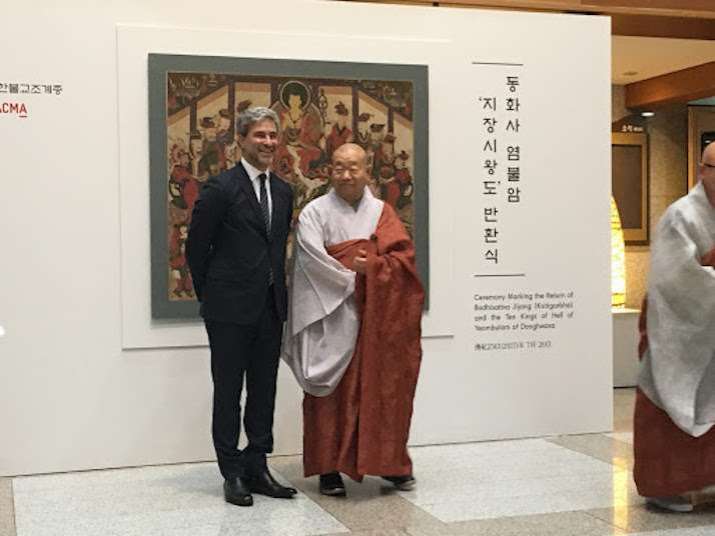
The returned paintings include Yeongsanhoesangdo (Preaching Shakyamuni Buddha), commissioned in 1755, which depicts the historical Buddha teaching a large assembly on Vulture Peak in India. Measuring 3.35 meters wide and 4.06 meters long, the work was reportedly carried to the US in six pieces before eventually being acquired by the LACMA in 1998 and fully restored in 2010–11.
LCMA also returned three sections of the six-panel Siwangdo—a narrative work depicting the Kings of Hell—all painted in 1798.
The Joseon dynasty spanned some 500 years, from 1392–1897 and is considered the peak of classical Korean culture and literature, and also a high point for the development of science and technology. The dynasty encouraged the propagation of the ideals and doctrines of Neo-Confucianism, which found favor as the state ideology. Although Buddhism was officially discouraged and on occasion subject to persecution, literary exchanges from the period show that Buddhism continued to thrive intellectually, with regular dialogues and exchanges of thought and philosophy between Confucian officials and Buddhist scholars.
LACMA was first contacted by the Jogye Order concerning the four images and other looted paintings in 2015. Further investigations, which included researching photographic evidence recorded by the US Army, revealed that the works were indeed stolen.
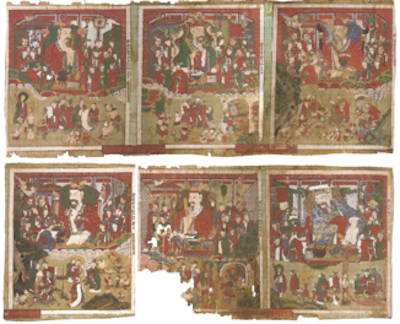
From unframed.lacma.org
“In March 2016, the Venerable Jeong-an and other high-ranking Jogye Order monks and officials visited LACMA and met with Director Michael Govan, Senior Vice President and General Counsel Fred Goldstein, and curators Stephen Little and Virginia Moon,” the two curators, Stephen Little, department head of Chinese, Korean, and South & Southeast Asian Art, and Virginia Moon, associate curator of Korean Art, stated in a blog post for the LACMA. “The delegation presented internal Jogye Order documents providing credible evidence of the theft of the painting from the Yeombulan Hermitage in 1988. After further discussion with LACMA staff in July 2016, Michael Govan wrote to Ven. Jeong-an stating that LACMA was prepared to recommend to the Board of Trustees at its October 2016 meeting that the painting be returned to the Jogye Order. We thereupon recommended that this work be de-accessioned and returned to Korea.
“In exchange for the return of these sacred works of art to Korea, and in recognition of LACMA’s conservation of these works, the Jogye Order has agreed to collaborate with LACMA on various cultural initiatives, including loans of artwork from each institution to the other for short- and long-term special exhibitions, presentations of related educational programs, and exchanges of human resources,” Little and Moon said. “As LACMA curators we are delighted that these sacred Buddhist paintings will soon be returning to their proper home.” (LACMA Unframed)
Founded in 1910 and established as an independent museum in 1961, LACMA is the largest art museum in the western United States, with a collection in excess of 150,000 works spanning the history of art from around the world.
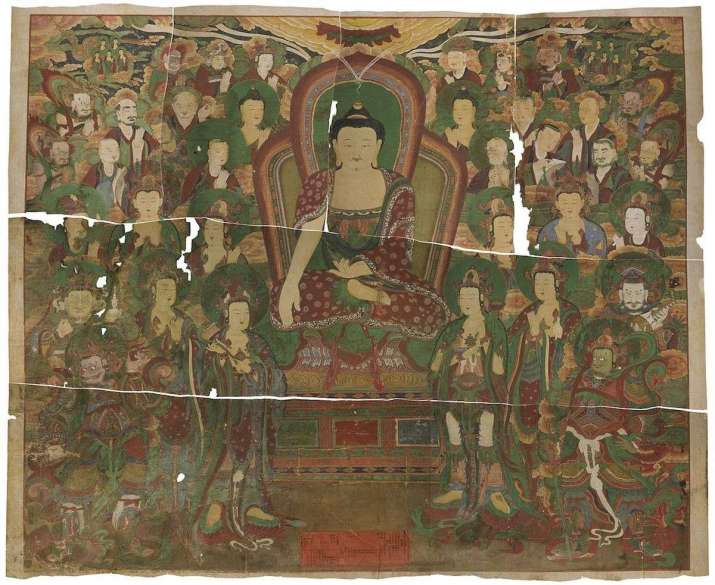
According to census data for 2015, the majority of South Korea’s population—56.1 per cent—holds no religious affiliation. Christians make up the largest religious segment of the population at 27.6 per cent, while Buddhists account for 15.5 per cent.
See more
LACMA Repatriates Buddhist Treasures to Korea (LACMA Unframed)
LACMA Repatriates Korean Buddhist Paintings (ArtAsiaPacific)
The Los Angeles County Museum of Art Restituted Four Buddhist Paintings Looted by Americans During the Korean War (artnet)
Joseon Dynasty-era Buddhist paintings to return home from U.S. (Yonhap News Agency)




